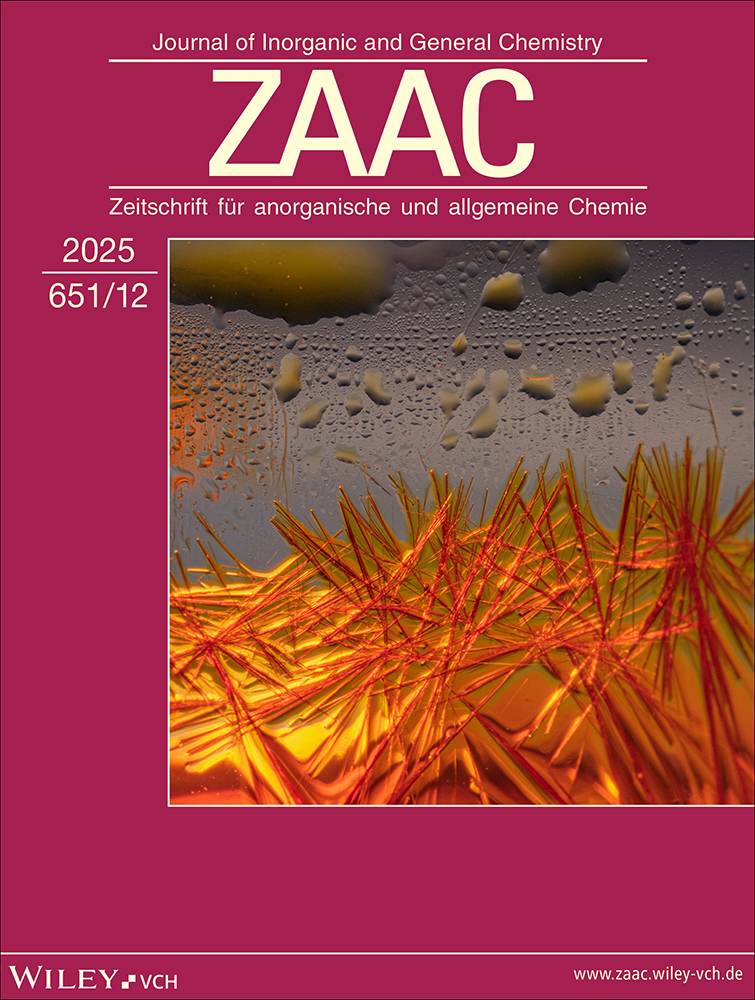Synthesis, Crystal Structure, and Bonding of (PCl4)2[Mo2Cl10], the First Compound in Mo–P–Cl System
Abstract
enAn ampule reaction between Mo and PCl5 at 200 °C yielded (PCl4)2[Mo2Cl10], the first ternary compound in Mo–P–Cl system. Single crystal X-ray diffraction gave a triclinic unit cell: a = 6.870(1), b = 8.892(2), c = 9.423(2) Å, α = 100.24(2), β = 95.55(2), γ = 96.12(2)° (V = 559.3(2) Å3, Z = 1, sp. gr. P1, wR2 = 0.0575 and R1 = 0.0279. The ionic compound is built from edge sharing bioctahedra [Mo2Cl10]2– and two tetrahedra PCl4+. The averaged Mo–Clb distance, 2.503(1) Å, is longer than the Mo–Clt distance, 2.33(2) Å. The Mo … Mo distance, 3.77 Å, indicates the absence of a direct Mo–Mo interaction. Semiempirical and ab initio calculations showed the possibility for [Mo2Cl10]2– to exist with long and short Mo to Mo distances, the letter corresponding to the Mo–Mo bond.
Abstract
deSynthese, Kristallstruktur und Bindungsverhältnisse von (PCl4)2[Mo2Cl10] – der ersten Verbindung im Mo–P–Cl System
Die erste Verbindung im System Mo–P–Cl, (PCl4)2[Mo2Cl10], wurde durch eine Ampullenreaktion von Mo mit PCl5 bei 200 °C hergestellt. Nach der Röntgenstrukturanalyse kristallisiert (PCl4)2[Mo2Cl10] triklin: Raumgruppe P1, a = 6,870(1), b = 8,892(2), c = 9,423(2) Å, α = 100,24(2), β = 95,55(2), γ = 96,12(2)°, V = 559,3(2) Å3, Z = 1, wR2 = 0,0575, R1 = 0,0279. Die Struktur besteht aus kantenverknüpften [Mo2Cl10]2–-Doppeloktaedern und tetraedrischen PCl4+-Kationen. Die mittlere Mo–Clbr-Bindung (2,503 Å) ist deutlich länger als die Mo–Clterm-Bindung (2,33 Å). Der Mo … Mo Abstand schließt eine direkte Mo–Mo Bindung aus. Halbempirische und ab initio Berechnungen zeigen, daß eine stabile Form von [Mo2Cl10]2– mit kurzem Mo–Mo-Abstand und direkter Mo–Mo-Bindung existieren kann.




